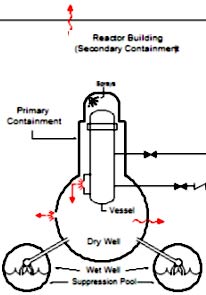http://www.asyura2.com/14/genpatu39/msg/727.html
| Tweet |

New report estimates 278 trillion Bq of plutonium released from Fukushima reactors — Over 200 times higher than amount reported by Tepco — “Highly radiotoxic when incorporated into human body” as it decays
新報告書は、福島原子炉から放出されたプルトニウムを278兆ベクレルと推定する-東京電力が報告した量よりも200倍以上多い-「人体と結合した場合、高度に放射能毒性がある」腐食するように
Published: August 5th, 2014 at 2:13 pm ET By ENENews
公開:2014年8月5日、午前2:13 ET:ENENewsによる
Evaluation of the Fukushima Accident Source Term through the fast running code RASCAL 4.2 (pdf), ENEA Bologna Research Centre, May 23, 2014: This Report presents the results of the application of the fast-running US-NRC direct code RASCAL 4.2 to the estimation of the Fukushima Source Term. [...]
高速ランニングコードRASCAL 4.2(PDFファイル)を通した福島の事故ソースターム(原子力施設から放出される放射能の発生源)の評価、ENEA (European Nuclear Energy Agency )欧州原子力機関ボローニャ研究センター、2014年5月23日:このレポートは、福島ソースタームの推定に対する、高速ランニング・米国原子力規制委員会(NRC)直接コードRASCAL 4.2のアプリケーションの結果を示す。 [...]
it is plausible that the ventings that TEPCO announced during the accident as being conducted from the wetwell were, as a matter of fact and because of the degraded conditions of the plants, conducted actually from the drywell. […] wetwell properties imply releases which can be several oder of magnitudes lower than those from the drywell […]
東京電力が事故の際にウェットウェルから行われたと発表したベントは、実際問題そして原発の劣化状態からすると、現実にはドライウェルから行われたのが、もっともらしいです。 [...]ウェットウェルの特性は、ドライウェルからのそれ(ベント)よりも数段階規模の低い放出を意味します。 [...]
it can clearly be seen that the most probable path is the combination of Drywell+Direct option […] the true venting path, i.e. from Drywell instead of from Wetwell, is an extremely important issue. […] in several instances when TEPCO tried to operate venting, in order to release pressure outside the building through the stack, it proved impossible […]
すなわち、最も可能性の高い(通気)経路は、ドライウェル+直接オプション(その場の選択)を組み合わせたものであることが、明らかに分かります[...]ウェットウェルに代わる真のベント経路、すなわちドライウェルは、極度に重要な問題です。 [...]東京電力が、スタック(煙突)を通じて建造物の外に圧力を解放するために、ベント操作しようと試みようとした幾つかの場合では、立証不可能でした[...]
there are many indications that probably the radioactive material escaped from the drywell; this may have occurred without TEPCO’s immediate knowledge and because of several factors; for example: structural damages to the pipings connecting drywell to torus room (vent piping bellows), due either to the earthquake, and/or to the too violent pressure and temperature increase in the D/W; leakages through the top head manhole, the top head flange, the piping penetrations, the electrical wiring penetrations, the personal airlocks, the S/C manholes, the machine hatches, etc. [...]
おそらく放射性物質はドライウェルから漏出したとする、多くの兆候がある。これは東京電力の緊急時知識がなかったこと、そして幾つかの要因により発生した可能性があります;例を示すと:地震 および/または 非常に強烈なD / W(ドライウェル)内の圧力と温度の上昇による、トーラス(円環)室にドライウェルを接続する配管(ふいご配管ベント)の損傷;トップヘッド・マンホール、トップヘッド・フランジ、配管の貫通部、電気配線の貫通部、パーソナル・エアロック、S / C(suppression chamber:圧力制御室)マンホール、マシン・ハッチなどを通じた漏出である[...]
The value of 1%/h was chosen by ENEA because of the possible highly damaged conditions of the Fukushima NPPs due to the BDB [Beyond Design Basis] earthquake.
1%/ h値は、BDB [設計基準を超えた] 地震 であったことが理由で、福島原発の可能な限り高度に損傷した状態のために、欧州原子力機関によって選ばれた。
> Table 7. Cumulative Source Term (Bq) TEPCO MELCOR
>表7. 累積的なソースターム(原子力施設から放出される放射能の発生源)(ベクレル)東京電力の(Methods for Estimation of. Leakages and Consequences of Releases:漏出と放出結果の推定方法)
Pu-241 Total = 1.2E+12 (1,200,000,000,000 Bq)
プルトニウム-241の合計= 1.2E + 12(1兆2000億ベクレル)
> Table 7. Cumulative Source Term (Bq) ENEA RASCAL 4.2
>表7の累積的なソース用語(ベクレル)ENEA RASCAL 4.2による
Pu-241 Unit 1 = 6.52E+13 (65,200,000,000,000 Bq)
Pu-241 Unit 2 = 1.86E+14 (186,000,000,000,000 Bq)
Pu-241 Unit 3 = 2.67E+13 (26,700,000,000,000 Bq)
Pu-241 Total = 2.78E+14 (278,000,000,000,000 Bq)
プルトニウム241、1号機= 6.52E + 13(65兆2000億ベクレル)
プルトニウム241、2号機= 1.86E + 14(186兆ベクレル)
プルトニウム241、3号機= 2.67E + 13(26兆7000億ベクレル)
プルトニウム241の合計 = 2.78E + 14(278兆ベクレル)

Environmental Science & Technology (American Chemical Society), July 11, 2014: [S]tandard alpha spectrometry techniques [...] are not able [...] to measure 241Pu.
環境科学&テクノロジー(アメリカ化学会)、2014年7月11日:[標] 準アルファ線分析技術は [...]プルトニウム241を測定[...]できない。
Boreal Environment Research (pdf), Feb. 28, 2014: The 241Pu isotope was introduced into the environment from [...] accidents that released nuclear reactor fuel, such as [...] the 2011 Fukushima catastrophe. As compared with other Pu isotopes in the environment that are alpha-emitting and long-lived, 241Pu is a short-lived isotope with a half-life of 14.35 years [...] 241Pu decays to the alpha emitter 241Am, that has a much longer half-life (432.2 years) and is highly radiotoxic when it is incorporated into either the human or animal body. [...]
北方環境研究(PDF)、2014年2月28日:プルトニウム241同位体は、2011福島破滅[...]のように、原子炉燃料を放出した事故[...]から環境に持ち込まれた。アルファ線を放射し寿命が長い、環境内にある他プルトニウム同位体と比較すると、プルトニウム241は14.35年の半減期を有する短命の同位体である[...]プルトニウム241はアルファ線を放射するアメリシウム241に減衰(崩壊)する、それははるかに長い半減期(432.2年)で、ヒトまたは動物のいずれかの体内に組み込まれたときに、高い放射能毒性をもつ。 [...]
The 241Pu isotope has been studied less extensively than the α-emitting Pu isotopes for several reasons. Activity concentration of 241Pu cannot be determined from the same alpha spectrum as the Pu isotopes 238, 239, and 240, and extra effort is needed in order to analyze 241Pu concentration of a sample. Actually, 241Pu emits alpha particles, but they have so low probability (0.002%) that 241Pu cannot be measured directly by α-spectrometry [...]
プルトニウム241同位体は、いくつかの理由のためにアルファ線放出プルトニウム同位体よりもあまり広く研究されていない。プルトニウム241の放射能濃度は、プルトニウム238、239、及び240のように同じアルファ線スペクトルから決定することができない、そして特別な労力がサンプル中のプルトニウム241濃度を分析するために必要とされる。実際に、プルトニウム241はアルファ線粒子を放出する、しかし非常に低い(検出の)確率(0.002%)であるのでプルトニウム241はアルファ線-分光測定によって直接測定することができない [...]
See also: Japan TV: Radiation release during ‘venting’ was up to 500 times larger than thought for Fukushima reactor — Surprising surge in radioactivity before explosions (VIDEO)
参照:日本のテレビ:「ベント」間の放射能放出は、福島原子炉について考えられているよりも500倍に及んだ-驚くべき爆発前の放射能急増(映像)
(タグCheck |タグに'だけを使っている場合のcheck |checkしない)(各説明)
(←ペンネーム新規登録ならチェック)
↓ペンネーム(2023/11/26から必須)
↓パスワード(ペンネームに必須)
(ペンネームとパスワードは初回使用で記録、次回以降にチェック。パスワードはメモすべし。)
↓画像認証

( 上画像文字を入力)
ルール確認&失敗対策
画像の URL (任意):
削除対象コメントを見つけたら「管理人に報告する?」をクリックお願いします。24時間程度で確認し違反が確認できたものは全て削除します。 最新投稿・コメント全文リスト
▲上へ ★阿修羅♪ > 原発・フッ素39掲示板 次へ 前へ
 スパムメールの中から見つけ出すためにメールのタイトルには必ず「阿修羅さんへ」と記述してください。
スパムメールの中から見つけ出すためにメールのタイトルには必ず「阿修羅さんへ」と記述してください。すべてのページの引用、転載、リンクを許可します。確認メールは不要です。引用元リンクを表示してください。